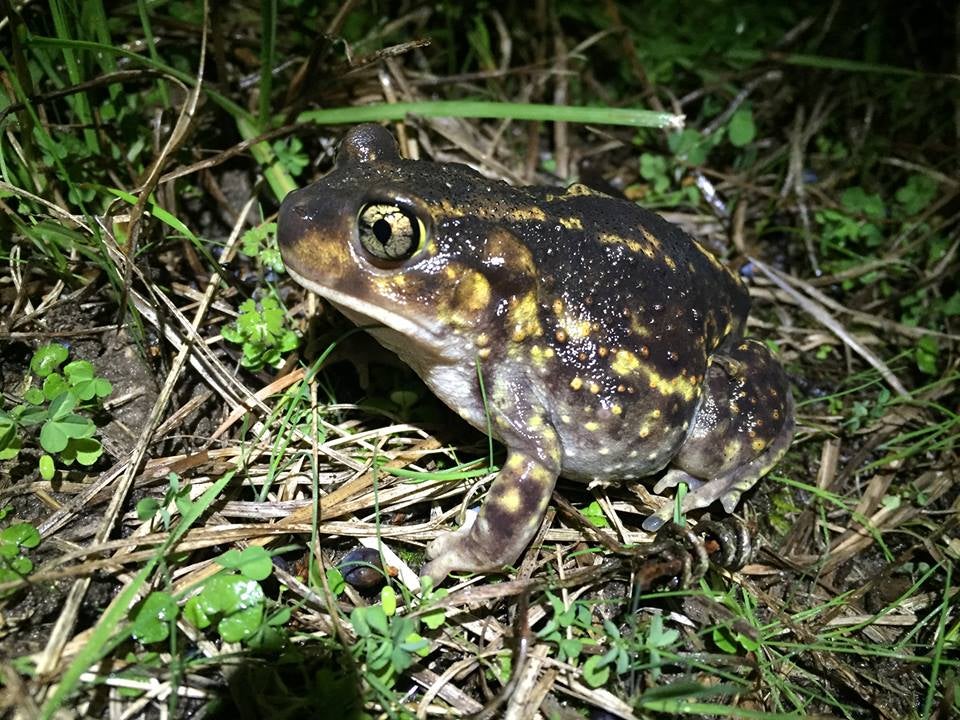SCIENTIFIC NAME:
Scaphiopus holbrooki holbrooki
STATUS:
Locally common statewide. Susceptible to destruction of breeding habitat, which may not be readily recognized as wetland. Low Conservation Concern.
DESCRIPTON:
The Eastern spadefoot toad (Scaphiopus holbrooki holbrooki) is a medium sized frog that can attain a total length over three inches. The skin of this frog is warty and the hind feet are completely webbed and feature a sickle-shaped spade on the inner surface of the inner toe. The pupil of the eye is vertically elliptical and there is no cranial crest (bony hump) between the eyes. A lyre-shaped figure is formed on the back by a pair of yellowish or greenish yellow stripes extending from behind the eye to the vent. The overall coloration is olive to brownish. One of two subspecies of Scaphiopus holbrooki occurs in Alabama (Scaphiopus holbrooki holbrooki).
DISTRIBUTION:
The range of S. holbrooki extends from southern New England through the Florida Keys (except the high Appalachians), west to central Louisiana, north to southern Illinois and Ohio. In Alabama, S. holbrooki holbrooki is found statewide.
HABITAT:
The Eastern spadefoot toad is a burrowing variety of frog that is secretive, emerging from its shallow burrow only at night on heavily overcast days. The surrounding habitat is usually forested, brushy, or cultivated areas of sandy, gravelly, or loose loam.
FEEDING HABITS:
Food items consist primarily of snails, spiders, earthworms, and various insects including beetles, grasshoppers, and caterpillars.
LIFE HISTORY AND ECOLOGY:
Breeding is confined to temporary pools and ponds that result from heavy rains from March to September. In Alabama, it has been reported that a minimum of two to three inches of rain coinciding with a temperature of 60 degrees F or above is needed to produce a breeding response. Also, capable of reproducing in pools that hold water only two to three weeks. Eggs are laid in gelatinous bands that are attached to aquatic vegetation. These stringy masses may contain 1,000 to 2,500 eggs. The eggs usually hatch within a week and in warm weather may hatch in one to three days.
Calls of the Eastern spadefoot toad are similar to crows cawing and are emitted while the male sits or floats in the water. A large chorus may be heard from a distance of over a mile away. In a defensive response, the skin of the frog gives off a bad tasting and smelly ooze that may discourage a predator; however, they sometimes become lunch for owls, crows, coyotes, and snakes.
REFERENCES:
Mount, R.. 1975. The Reptiles & Amphibians of Alabama. Auburn Printing Co., Auburn, AL. 347 pp.
AUTHOR: Steve Barnett, Wildlife Biologist, Alabama Wildlife and Freshwater Fisheries






